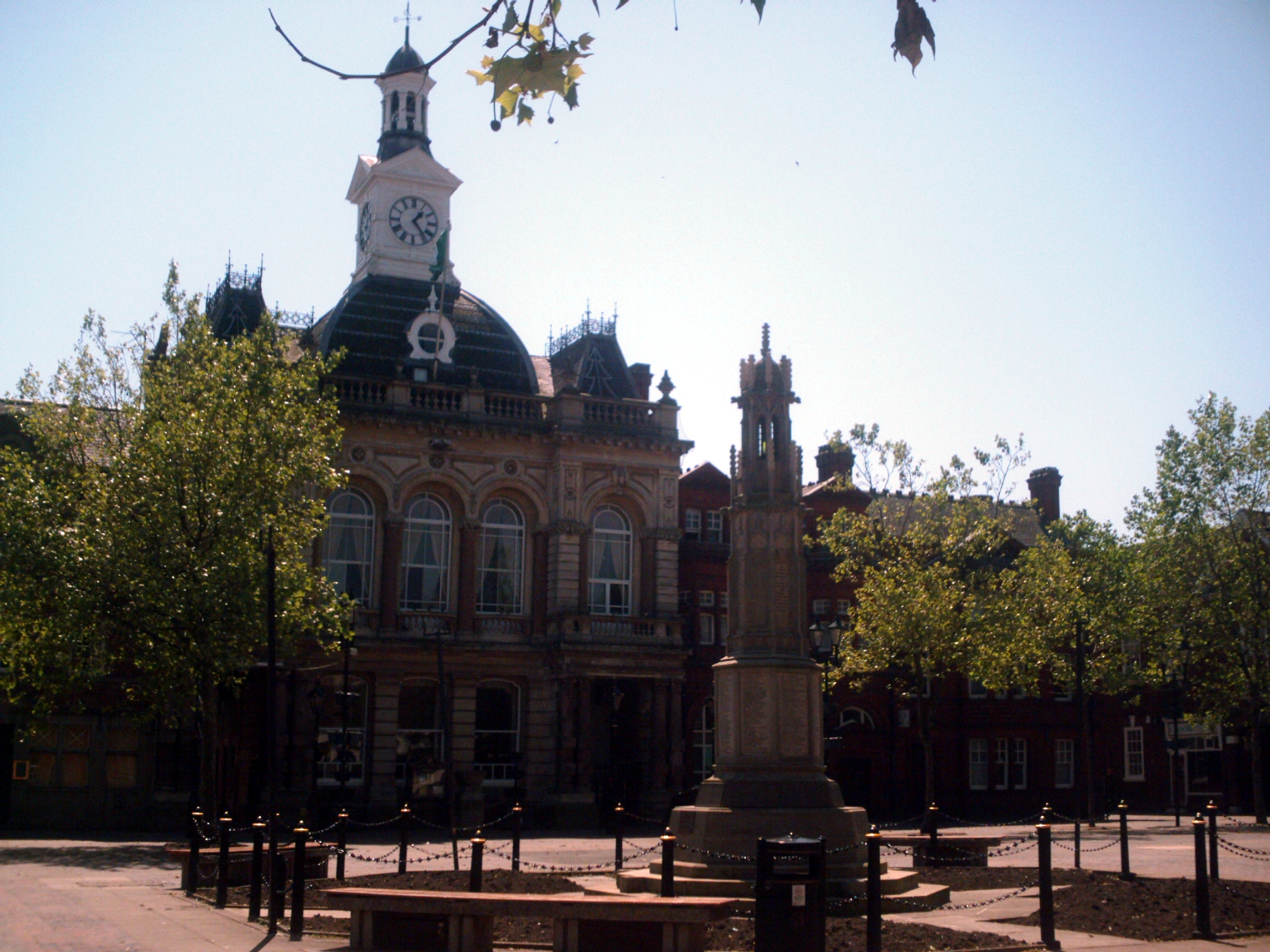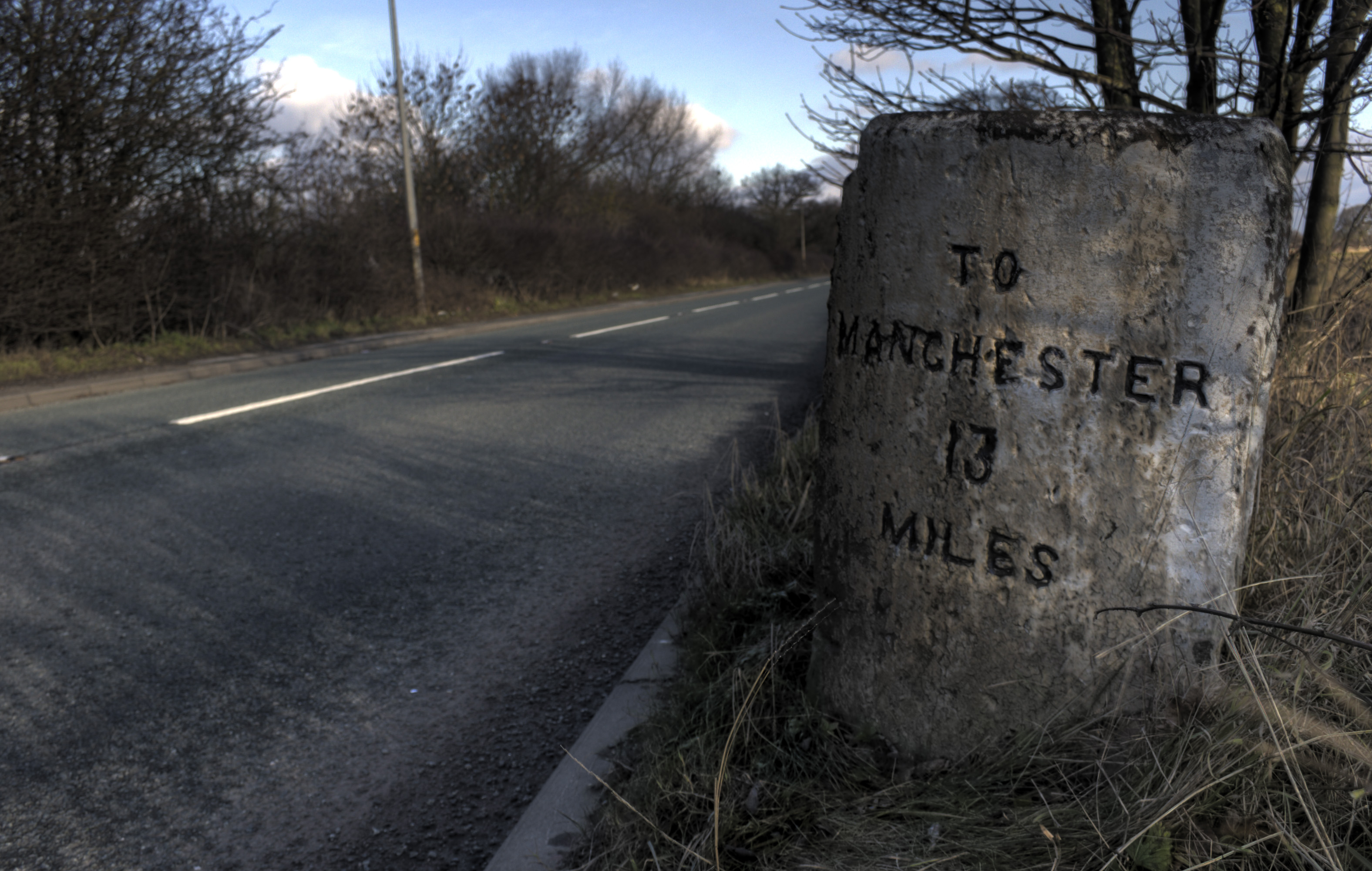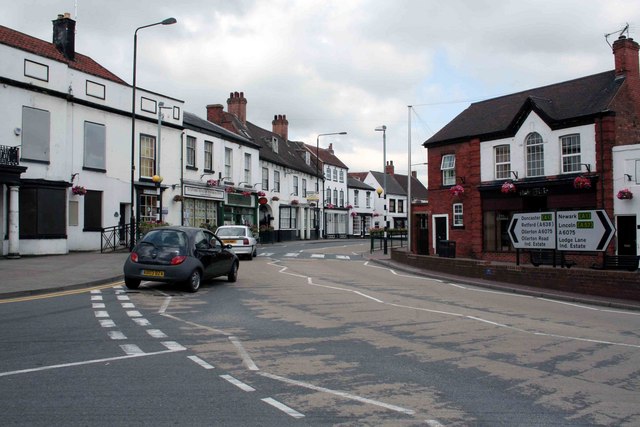|
Darlton
Darlton is a small village and civil parish in Nottinghamshire, England. It is on the A57 road about north-east of Tuxford. The population of the civil parish was 102 at the 2001 Census, increasing to 110 at the 2011 Census. The Church of England parish church of St Giles is 12th century and is in the Transitional style. In 1855 it was heavily restored by the architect T.C. Hine. Kingshaugh House was originally a hunting lodge built to serve the eastern Le Clay division of Sherwood Forest. It was fortified with earthworks in a rebellion of 1196 against King John. A new lodge was built in 1210–11 at a cost of £550 but was abandoned after 1217. The present Kingshaugh House is a late 17th-century farmhouse that appears to incorporate some masonry from the lodge. Darlton is the birthplace of Charles Read (1604–1669), who became a wealthy shipper in Kingston upon Hull. In 1667 Read founded a grammar school and a set of almshouses at Drax in Yorkshire. When Read died, h ... [...More Info...] [...Related Items...] OR: [Wikipedia] [Google] [Baidu] |
St Giles' Church, Darlton
St Giles' Church, Darlton is a Grade II* listed parish church in the Church of England in Darlton. History The church dates from the beginning of the 13th century. The chancel and nave were rebuilt in 1863 by Thomas Chambers Hine. The churchyard contains three Grade II listed chest tombs, and the lychgate A lychgate, also spelled lichgate, lycugate, lyke-gate or as two separate words lych gate, (from Old English ''lic'', corpse), also ''wych gate'', is a gateway covered with a roof found at the entrance to a traditional English or English-style ch ... and churchyard walls are also Grade II listed. References {{DEFAULTSORT:Darlton Church of England church buildings in Nottinghamshire Grade II* listed churches in Nottinghamshire ... [...More Info...] [...Related Items...] OR: [Wikipedia] [Google] [Baidu] |
Bassetlaw District
Bassetlaw is a local government district in Nottinghamshire, England. The district has four towns: Worksop, Tuxford, Harworth Bircotes and Retford. It is bounded to the north by the Metropolitan Boroughs of Doncaster and Rotherham, the east by West Lindsey, the west by both the Borough of Chesterfield and North East Derbyshire and the south by Mansfield District and Newark and Sherwood. The district is along with Bolsover District, North East Derbyshire and Borough of Chesterfield is a non-constituent member of the Sheffield City Region. History Bassetlaw was created as a non-metropolitan district in 1974 by the merger of the municipal boroughs of Worksop and East Retford and most of Worksop Rural District and East Retford Rural District following the passage of the Local Government Act 1972. Local Government in Nottinghamshire is organised on a two-tier basis, with local district councils such as Bassetlaw District Council responsible for local services such as housin ... [...More Info...] [...Related Items...] OR: [Wikipedia] [Google] [Baidu] |
A57 Road
The A57 is a major road in England. It runs east from Liverpool to Lincoln, England, Lincoln via Warrington, Cadishead, Irlam, Patricroft, Eccles, Greater Manchester, Eccles, Salford, Greater Manchester, Salford and Manchester, then through the Pennines over the Snake Pass (between the high moorlands of Bleaklow and Kinder Scout), around the Ladybower Reservoir, through Sheffield and past Worksop. Between Liverpool and Glossop, the road has largely been superseded by the M62 motorway, M62, M602 motorway, M602 and M67 motorways. Within Manchester a short stretch becomes the Mancunian Way, designated A57(M). Route Liverpool–Warrington The A57 begins at The Strand (A5036) near the River Mersey, as part of Water Street. It forms an east–west route through the north of the city centre with another one-way road system as Tithebarn Street (passing part of Liverpool John Moores University), Great Crosshall Street and Churchill Way in the east direction and Churchill Way and Dale ... [...More Info...] [...Related Items...] OR: [Wikipedia] [Google] [Baidu] |
Tuxford
Tuxford is a historic market town and a civil parish in the Bassetlaw District, Bassetlaw district of Nottinghamshire, England. At the 2001 census, it had a population of 2,516, increasing to 2,649 at the 2011 census. Geography Nearby towns are Ollerton, Nottinghamshire, Ollerton, Retford, Worksop, Mansfield and Newark-on-Trent. The nearest cities are Lincoln, England, Lincoln and Nottingham. The town is located near the border with Lincolnshire in The Dukeries. The A6075 passes through east–west and connects the A57 road, A57 to Ollerton and Mansfield. The East Coast Main Line passes close to the east. The A611 previously went east–west through the town; this is now the A6075; the A611 now goes from Mansfield to Hucknall. The Great North Road (United Kingdom), Great North Road runs through the town (now B1164), though the majority of traffic now uses the modern A1 road (Great Britain), A1 trunk road, which splits the town in two. The town was bypassed in 1967. The se ... [...More Info...] [...Related Items...] OR: [Wikipedia] [Google] [Baidu] |
Whimpton Village
Whimpton Village is a deserted medieval village in Nottinghamshire, England. It is near the A57 road between the villages of Darlton and Dunham-on-Trent. It is a Scheduled Monument. History Whimpton is mentioned, as Wimentun, in the Domesday Book; it is described there as one of the four wikt:berewick, berewicks of the King's Manor of Duneham (Dunham). A berewick was a detached, partly independent portion of a Manorialism, manor. The village (spelled also Wimpton or Wymton) is mentioned in pipe rolls in the 12th, 13th and 14th centuries, mentioning land and inhabitants of the village. The village evidently did not exist by 1547, since in that year there was an inquisition post mortem on the properties of Robert Nevyll, in which Whimpton is only a field name. Earthworks The surviving remains of the village are earthworks mostly in a field, on rising ground, south of the A52 road; some are north of the road, near Whimpton House. There is a roadway, widest at the centre and narrower ... [...More Info...] [...Related Items...] OR: [Wikipedia] [Google] [Baidu] |
Corby Glen
Corby Glen is a village and civil parish in the South Kesteven district of Lincolnshire, England. It is approximately south-east of the market town of Grantham and 8 miles (13 km) north west of Bourne. History The Church of England parish church dedicated to Saint John the Evangelist dates in part from the 12th century and has a notable collection of 14th- and 15th-century murals. Following the purchase of Irnham Hall by a Protestant family in the mid-19th century the Catholic Chapel of the hall was taken down and re-erected in Corby Glen as the Roman Catholic church of Our Lady of Mount Carmel to the designs of architects Weightman, Hadfield & Goldie. A thousand wagonloads of material were carried between the two sites. The new church opened in 1856. The church closed in 2012. The church and the attached presbytery are Grade II Listed buildings. The village's first Methodist chapel was built in 1846, and replaced in 1902 by the present building which is still in us ... [...More Info...] [...Related Items...] OR: [Wikipedia] [Google] [Baidu] |
Drax, North Yorkshire
Drax is a village and civil parish in the Selby District of North Yorkshire, England, about south-east of Selby, best known today as the site of Drax power station. It was historically part of the West Riding of Yorkshire until 1974. The village primary school closed in 2017. History Drax has a Church of England parish church, dedicated to St Peter and St Paul. In the reign of King Henry I (1100–1135) William Paynel founded a priory of Augustinian Canons at Drax. In 1868 it was reported that traces of the priory could still be found but fieldwork in the 1980s and 1990s has failed to find any physical remains of it. By the mid-13th century, Drax was a borough of local significance. However, an inquisition held in 1405 stated that the local manor was of no value, as it had been flooded by the Ouse, and the borough was not even mentioned, leading George Sheeran to claim that flooding may have led to the abandonment of the town, or at least the end of its borough status. ... [...More Info...] [...Related Items...] OR: [Wikipedia] [Google] [Baidu] |
Grammar School
A grammar school is one of several different types of school in the history of education in the United Kingdom and other English-speaking countries, originally a school teaching Latin, but more recently an academically oriented secondary school, differentiated in recent years from less academic secondary modern schools. The main difference is that a grammar school may select pupils based on academic achievement whereas a secondary modern may not. The original purpose of medieval grammar schools was the teaching of Latin. Over time the curriculum was broadened, first to include Ancient Greek, and later English and other European languages, natural sciences, mathematics, history, geography, art and other subjects. In the late Victorian era grammar schools were reorganised to provide secondary education throughout England and Wales; Scotland had developed a different system. Grammar schools of these types were also established in British territories overseas, where they have evolv ... [...More Info...] [...Related Items...] OR: [Wikipedia] [Google] [Baidu] |
Villages In Nottinghamshire
A village is a clustered human settlement or community, larger than a hamlet but smaller than a town (although the word is often used to describe both hamlets and smaller towns), with a population typically ranging from a few hundred to a few thousand. Though villages are often located in rural areas, the term urban village is also applied to certain urban neighborhoods. Villages are normally permanent, with fixed dwellings; however, transient villages can occur. Further, the dwellings of a village are fairly close to one another, not scattered broadly over the landscape, as a dispersed settlement. In the past, villages were a usual form of community for societies that practice subsistence agriculture, and also for some non-agricultural societies. In Great Britain, a hamlet earned the right to be called a village when it built a church. [...More Info...] [...Related Items...] OR: [Wikipedia] [Google] [Baidu] |
Deserted Medieval Village
In the United Kingdom, a deserted medieval village (DMV) is a former settlement which was abandoned during the Middle Ages, typically leaving no trace apart from earthworks or cropmarks. If there are fewer than three inhabited houses the convention is to regard the site as deserted; if there are more than three houses, it is regarded as a shrunken medieval village. There are estimated to be more than 3,000 DMVs in England alone. Other deserted settlements Not all sites are medieval: villages reduced in size or disappeared over a long period, from as early as Anglo-Saxon times to as late as the 1960s, due to numerous different causes. Reasons for desertion Over the centuries, settlements have been deserted as a result of natural events, such as rivers changing course or silting up, flooding (especially during the wet 13th and 14th centuries) as well as coastal and estuarine erosion or being overwhelmed by windblown sand. Many were thought to have been abandoned due to the de ... [...More Info...] [...Related Items...] OR: [Wikipedia] [Google] [Baidu] |
Will (law)
A will or testament is a legal document that expresses a person's (testator) wishes as to how their property ( estate) is to be distributed after their death and as to which person ( executor) is to manage the property until its final distribution. For the distribution (devolution) of property not determined by a will, see inheritance and intestacy. Though it has at times been thought that a "will" historically applied only to real property while "testament" applied only to personal property (thus giving rise to the popular title of the document as "last will and testament"), the historical records show that the terms have been used interchangeably. Thus, the word "will" validly applies to both personal and real property. A will may also create a testamentary trust that is effective only after the death of the testator. History Throughout most of the world, the disposition of a dead person's estate has been a matter of social custom. According to Plutarch, the written will was ... [...More Info...] [...Related Items...] OR: [Wikipedia] [Google] [Baidu] |
Almshouse
An almshouse (also known as a bede-house, poorhouse, or hospital) was charitable housing provided to people in a particular community, especially during the medieval era. They were often targeted at the poor of a locality, at those from certain forms of previous employment, or their widows, and at elderly people who could no longer pay rent, and are generally maintained by a charity or the trustees of a bequest (alms are, in the Christian tradition, money or services donated to support the poor and indigent). Almshouses were originally formed as extensions of the church system and were later adapted by local officials and authorities. History Many almshouses are European Christian institutions though some are secular. Almshouses provide subsidised accommodation, often integrated with social care resources such as wardens. England Almshouses were established from the 10th century in Britain, to provide a place of residence for poor, old and distressed people. They were someti ... [...More Info...] [...Related Items...] OR: [Wikipedia] [Google] [Baidu] |








